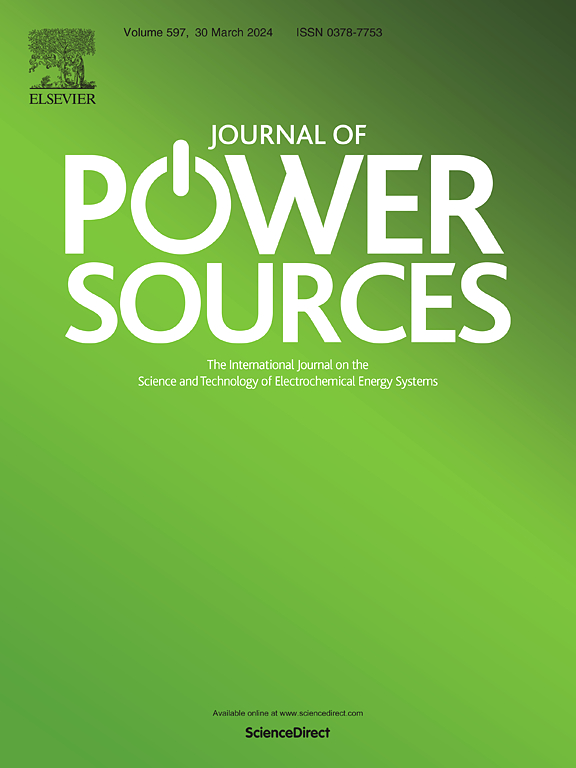Dispersed-laminated structure enabled the practical ultrathin lithium anode
IF 8.1
2区 工程技术
Q1 CHEMISTRY, PHYSICAL
引用次数: 0
Abstract
Lithium metal as an ideal anode with high theoretical capacity and low redox potential, faces hurdles in commercialization due to volume instability and dendrite growth during cycling. Herein, we present a three-dimensional composite Li anode (Li@CNT) with a dispersed-laminated skeleton structure, which fabricated by mechanical rolling repeatedly of conductive carbon nanotube (CNT) films and Li strips. The uniform distribution of LiC12 and the cross-linked CNT enhance the uniformity of the electric field, inhibiting the formation of deep stripping pores and promoting radial deposition, which in turn mitigates volume changes and inhibits dendrite growth. The as-prepared Li@CNT anode achieves 99.7 % Coulombic efficiency and 3000-h lifespan at 1 mA cm−2 and 1 mAh cm−2. Furthermore, Li@CNT exhibits higher tensile strength (reached 11.3 MPa), which is beneficial for preparing the ultrathin Li strips. The ultrathin Li@CNT||LiFeO4 full cell exhibits 94.7 % capacity after 200 cycles. This work paves the way for the efficient manufacture of high-performance Li anodes for practical applications.

求助全文
约1分钟内获得全文
求助全文
来源期刊

Journal of Power Sources
工程技术-电化学
CiteScore
16.40
自引率
6.50%
发文量
1249
审稿时长
36 days
期刊介绍:
The Journal of Power Sources is a publication catering to researchers and technologists interested in various aspects of the science, technology, and applications of electrochemical power sources. It covers original research and reviews on primary and secondary batteries, fuel cells, supercapacitors, and photo-electrochemical cells.
Topics considered include the research, development and applications of nanomaterials and novel componentry for these devices. Examples of applications of these electrochemical power sources include:
• Portable electronics
• Electric and Hybrid Electric Vehicles
• Uninterruptible Power Supply (UPS) systems
• Storage of renewable energy
• Satellites and deep space probes
• Boats and ships, drones and aircrafts
• Wearable energy storage systems
 求助内容:
求助内容: 应助结果提醒方式:
应助结果提醒方式:


